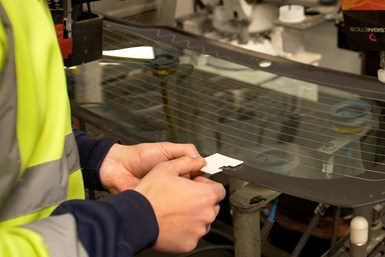Saint-Gobain 3D Prints Tooling for Elevated Efficiency
BCN3D is assisting Saint-Gobain production with its 3D printers manufacturing tooling in-house.
Share
Read Next
Saint-Gobain’s Barcelona plant incorporated 3D printing technology (including IDEX Technology) in its workshop with several BCN3D Epsilon W50 series printers and Smart Cabinets. It is said the technology makes it easier for the multinational company to develop new ideas; easily and conveniently create new prototypes in a shorter period of time compared to other machining technologies; carry out tests; and create end-use parts in a matter of days, all while maintaining the highest quality.
Since 2019, Saint-Gobain's Sekurit business unit at the Barcelona plant — where 19 million different automotive glazing units (backlites and sidelites) are produced per year — has incorporated 3D printing technology. Previously, it outsourced the manufacture of tooling that it entrusted to mechanized processes which had much higher costs compared to 3D printing.
The incorporation of this additive manufacturing (AM) technology has enabled the company’s Spanish plant to save around 170,000 Euros and reduce its lead times for tooling by 93%. The 3D printed parts take the form of tools, jigs and fixtures all the way through to quality control.
BCN3D's 3D printers and various technological solutions now enable Saint-Gobain engineers at its Barcelona plant to improve efficiency in the manufacturing processes of parts and components for its automotive customers, including Daimler Mercedes, Stellantis Group, Volkswagen Group, Renault Dacia and Ford. By creating 3D printed tooling, Saint-Gobain’s Spanish factory improved and reduced costs and times by manufacturing tooling implemented in automated lines.
Saint-Gobain integrates AM into tooling that facilitates the production of rear and side panels for vehicles. The process begins with a fully automated robot line: the glazing is cut to shape, the sides are smoothed and designated aesthetic details are added.
The glazing is then collected and placed in an oven to create the curves. Fresh from the furnace, the glazing is checked for dimensions and quality, and then sorted into pass or fail for manual checking.
This success exemplifies how BCN3D’s 3D printing technology can assist the automotive sector and consolidates the AM solutions manufacturer as a strategic partner in this industrial sector, the company says. This case follows the incorporation of equipment in the production plants of Seat and Nissan in past years.
"At Sekurit, we have been manufacturing automotive components for 90 years. Thanks to 3D printing, we have experienced a significant cost reduction and a faster workflow adapted to our needs in the manufacture of tooling,” says Angel Salas, Saint-Gobain’s maintenance engineer at the Barcelona factory.
Related Content
-
Video: 5" Diameter Navy Artillery Rounds Made Through Robot Directed Energy Deposition (DED) Instead of Forging
Big Metal Additive conceives additive manufacturing production factory making hundreds of Navy projectile housings per day.
-
Machine Tool Drawbar Made With Additive Manufacturing Saves DMG MORI 90% Lead Time and 67% CO2 Emission
A new production process for the multimetal drawbar replaces an outsourced plating step with directed energy deposition, performing this DED along with roughing, finishing and grinding on a single machine.
-
What Is Neighborhood 91?
With its first building completely occupied, the N91 campus is on its way to becoming an end-to-end ecosystem for production additive manufacturing. Updates from the Pittsburgh initiative.















